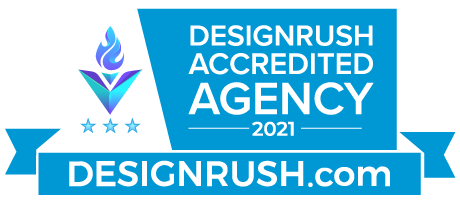B2B SaaS Integrated Marketing: Your Identity, Your Message, & Your Target Audience
Constantly growing competition, increasing demands on your customers’ attention, and challenging economic circumstances. These all make reaching your customers more difficult than ever. With traditional marketing no longer enough, and digital marketing incredibly complex to manage across a growing list of platforms, what’s the key to competing and winning as a B2B SaaS company?
The answer: integrated marketing, or marketing that emphasizes a consistent brand experience for customers across every channel in which your brand has a presence. Here’s what you need to know about getting started.
Review Competitive Landscape and Positioning
Before you can develop an effective brand identity and messaging strategy, it’s important to understand the competitive landscape and your position within it. This will help you determine what unique value your brand offers, and how best to create and communicate a consistent experience to your target audience across any channel.
Who are you trying to reach with your marketing messages? It’s important to develop target personas that will help you laser-focus your efforts.
Once you understand your target audience, it’s important to define the voice of your brand. This will set the overall tone for all of your marketing communications and brand identity, and ensure that they are on-brand and consistent across all channels.
Develop Messaging Platform
In order to establish your brand’s tone and positioning, you need to identify your messaging strategy that will be used across all channels. These should be consistent with the overall tone and voice of your brand, and should provide a clear, concise way of communicating your unique value proposition to potential customers. Our guide to creating connections through your messaging strategy is a great place to start.
Once you’ve created your messaging platform, it’s important to test them and see how they perform. This will help you determine which ones resonate the most with your target audience and need further refinement. Be prepared to iterate on your messaging as needed in order to continue achieving desired results.
Your Website: The Front Page of Your Customer Experience
Once you’ve created your messaging platform to create a unified SaaS brand experience, it’s important to translate that experience to your website. This means creating a site that effectively communicates your brand’s value proposition and provides a clear path to conversion.
Your website’s design should be consistent with the overall tone and voice of your brand, and should reinforce your key messages. Be sure to test all of your key pages and make changes as needed. Remember that working in the vacuum of the design and copywriting phase for your site can make it easy to lose sight of your actual audience, and getting their direct feedback via testing can be a powerful tool in establishing a website (and other brand materials) that is effective at meeting your goals.
Meanwhile, your home page should be designed and written in a way that makes it easy for visitors to quickly understand your SaaS brand’s value proposition. If they can’t figure out what you do and why they should care, they’ll be unlikely to stick around long enough to learn more. It’s not just about sharing the technical aspects of what you do— it’s about telling a story with your audience as the protagonist, and your solution as the most essential tool to help your target audience reach their goals.
Integrating All Marketing Channels & Customer Touchpoints
Creating consistent branding and messaging across all touchpoints, from social media to email marketing and paid advertising, from your website’s homepage to individual interactions with customers, is key to an integrated marketing strategy that’s pulling all of your SaaS organization’s marketing efforts in the same direction.
But you can’t do any of that until you’ve determined your goals. Identifying and then striving toward specific campaign goals might seem obvious when promoting a specific product or service, but many B2B SaaS businesses fail to identify and pursue specific goals when it comes to their overall brand identity. These specific goals should inform everything that comes next— from selecting your marketing channels to creating SaaS buyer personas, from developing content to cross-promoting your various channels.
Your brand should be easily recognizable no matter where your potential customers encounter it. Keep this in mind as you design your marketing communications and brand presence, and be prepared to make changes as needed to ensure a consistent brand experience.
Benefits of Integrated SaaS Marketing.
We’ve covered many of the essential components and steps involved with developing a more integrated SaaS marketing strategy.
- Provides clear language, proof points, and positioning for your brand
- Ensures your brand is consistent with every engagement
- Focuses on customers’ pain points
- Provides a path for persona-specific messaging
- Differentiates your company based on value offered
- Makes your brand identifiable and increases psychological ‘comfort’ in your audience each time they’re exposed to your imagery and message
- Increases internal alignment and boosts productive collaboration
Let Us Help You Elevate Your SaaS Brand Across Every Channel
An integrated marketing strategy is absolutely essential for any B2B SaaS company. By taking the time to develop a messaging platform and integrate it across all channels, you can ensure that your brand, your voice, your mission, and your solutions are all consistently communicated to potential customers. This will help you build trust and credibility with your audience, establish yourself as a leader in your market, and ultimately help you reach and exceed SaaS growth goals and long-term benchmarks.
Need help with channel and message planning and your overall brand integration? LeadIt can help. Set up a free consultation today.













